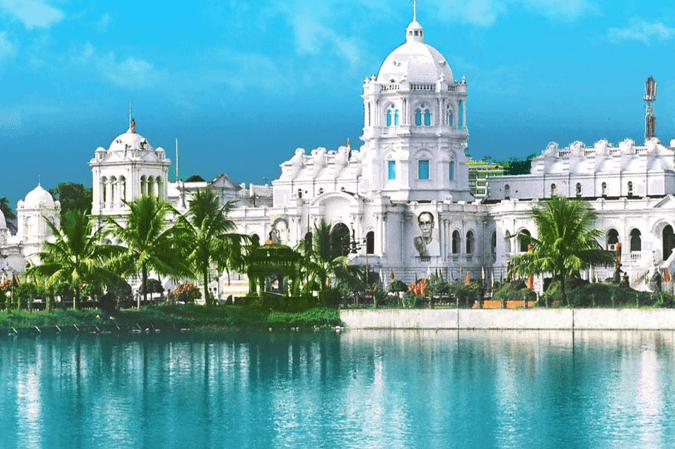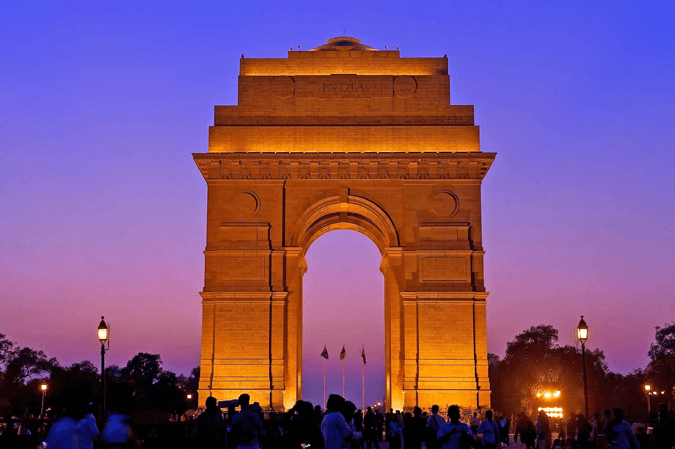Maharashtra, located in the western part of India, is the third-largest state by area and the second-largest by population. Known for its diverse landscapes, historical significance, and cultural richness, Maharashtra plays a crucial role in India’s economy, history, and society. This overview will cover its history, landscape, area, climatic conditions, historical places, festivals, environment, society, and some interesting and hidden facts.
History
Maharashtra has a long and illustrious history that has shaped its current cultural and political landscape:
- Ancient and Medieval Periods: The region has been inhabited since prehistoric times, with evidence of early human settlements found in various parts. Over the centuries, it was ruled by several dynasties, including the Mauryas, Satavahanas, Vakatakas, Chalukyas, Rashtrakutas, and Yadavas.
- Maratha Empire: The 17th century saw the rise of the Maratha Empire under the leadership of Chhatrapati Shivaji Maharaj, who founded the empire and is regarded as a hero in Maharashtra. The Marathas became a formidable force against the Mughal Empire and established a vast kingdom that stretched across India.
- Colonial Era: Maharashtra came under British control in the early 19th century. The state became a center for political and social movements, with leaders like Bal Gangadhar Tilak and Dr. B.R. Ambedkar playing pivotal roles in India’s freedom struggle.
- Post-Independence: After India’s independence in 1947, Maharashtra was formed on May 1, 1960, after the division of the Bombay State on linguistic lines, making it one of the most significant states in modern India.
Landscape and Area
Maharashtra covers an area of 307,713 square kilometers, making it the third-largest state in India:
- Western Ghats: The Western Ghats, a UNESCO World Heritage site, run along the western edge of the state, offering a rich biodiversity and scenic landscapes.
- Konkan Coast: The coastal region, known as the Konkan, is narrow but lush with tropical vegetation, sandy beaches, and beautiful landscapes.
- Deccan Plateau: The central and eastern part of the state consists of the Deccan Plateau, characterized by rolling hills, rivers, and fertile plains.
- Major Rivers: The state is crisscrossed by several important rivers, including the Godavari, Krishna, and Tapi, which support agriculture and provide water to large parts of the state.
Climatic Conditions
Maharashtra experiences a variety of climatic conditions due to its diverse topography:
- Coastal Climate: The Konkan region enjoys a tropical climate, with hot and humid summers and a heavy monsoon season. The winters are mild.
- Plateau Climate: The central part of Maharashtra, including cities like Pune and Nagpur, has a more moderate climate, with hot summers, mild winters, and a monsoon season from June to September.
- Dry Climate: The eastern parts of the state, particularly in the Vidarbha region, experience a semi-arid climate with hot summers and lower rainfall compared to the rest of the state.
Historical Places
Maharashtra is home to a wealth of historical monuments, many of which are UNESCO World Heritage Sites:
- Ajanta and Ellora Caves: These ancient rock-cut caves are renowned for their stunning murals, sculptures, and architecture, dating back to the 2nd century BCE and representing Buddhist, Hindu, and Jain faiths.
- Chhatrapati Shivaji Maharaj Terminus (Mumbai): A stunning example of Victorian Gothic architecture, this railway station is a UNESCO World Heritage Site.
- Gateway of India: Located in Mumbai, this iconic monument was built to commemorate the visit of King George V and Queen Mary to India in 1911.
- Raigad Fort: The capital of the Maratha Empire under Shivaji Maharaj, Raigad Fort is perched atop a hill and is a symbol of Maratha pride.
- Shaniwar Wada (Pune): The seat of the Peshwas, this historical palace is a reminder of the Maratha Empire’s grandeur.
- Elephanta Caves: Located on an island near Mumbai, these caves are famous for their rock-cut sculptures, particularly the magnificent statue of Lord Shiva.
Festivals
Maharashtra is known for its vibrant festivals that showcase the state’s rich cultural traditions:
- Ganesh Chaturthi: Celebrated with immense fervor, particularly in Mumbai and Pune, this festival is dedicated to Lord Ganesha and involves grand processions and elaborate pandals.
- Diwali: The festival of lights is celebrated across the state with traditional fervor, marked by the lighting of lamps, bursting of crackers, and elaborate feasts.
- Gudi Padwa: The Maharashtrian New Year, celebrated in the spring, marks the beginning of a new year according to the Hindu calendar.
- Janmashtami: Celebrated with great enthusiasm in Mumbai, where the “Dahi Handi” tradition involves groups forming human pyramids to break pots of curd.
- Ellora and Ajanta Festivals: These cultural festivals celebrate the art and heritage of the famous Ajanta and Ellora caves through performances of music, dance, and drama.
Environment
Maharashtra is home to a diverse range of flora and fauna:
- Flora: The Western Ghats are rich in biodiversity, with dense forests, bamboo, teak, and medicinal plants. The Vidarbha and Marathwada regions have semi-arid vegetation, including shrubs and thorny bushes.
- Fauna: The state is home to tigers, leopards, deer, wild boars, and a variety of bird species. Notable national parks include Tadoba Andhari Tiger Reserve, Sanjay Gandhi National Park, and Chandoli National Park.
- Conservation Efforts: The state has implemented various conservation programs to protect its wildlife, including Project Tiger and initiatives for the conservation of wetlands and forests.
Society and Culture
Maharashtra’s society is diverse, with a blend of traditional and modern influences:
- Languages: Marathi is the official language of the state, spoken by the majority of the population. However, Hindi, English, and various regional languages are also spoken widely.
- Art and Craft: Maharashtra is known for its traditional crafts, such as Paithani sarees, Warli paintings, and Kolhapuri chappals. The state’s dance forms include Lavani, Tamasha, and Dhangari Gaja.
- Cuisine: Maharashtrian cuisine is characterized by its use of rice, wheat, lentils, and vegetables, with popular dishes including vada pav, pav bhaji, puran poli, and bhakri. The food tends to be spicy, with a unique blend of flavors.
Interesting and Hidden Facts
- Mumbai, the Financial Capital: Mumbai, the capital of Maharashtra, is not only the largest city in India but also the financial capital of the country. It houses the Bombay Stock Exchange, Reserve Bank of India, and headquarters of several major corporations.
- Lonar Lake: This unique crater lake in the Buldhana district was formed by a meteor impact over 52,000 years ago. It is one of the only hyper-velocity impact craters in basaltic rock in the world.
- Dabbawala System: Mumbai’s famous dabbawala system, where thousands of lunchboxes are delivered daily with remarkable precision, is considered a marvel of logistics.
- Largest Wine-Producing State: Maharashtra is the largest wine-producing state in India, with Nashik being the wine capital known for its vineyards and wineries.
Sources
- Government of Maharashtra’s official website
- Encyclopaedia Britannica
- Maharashtra Tourism Development Corporation
- Historical texts and cultural studies on Maharashtra
- UNESCO World Heritage Centre data
- Image Source: wp-content



